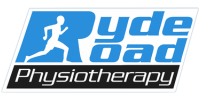Most of us are familiar with the phrase, ‘Knowledge is power.’ When it comes to musculoskeletal injuries, acquiring a deeper understanding of an injury enables us to implement both better recovery and prevention strategies. The ‘power’ that this gives an athlete is in reduced recovery time, less time off sport due to injury and a reduced likelihood of succumbing to the dreaded re-injury.
The fact sheets below from Sports Medicine Australia are a great place to start increasing your knowledge of some of the more common lower limb injuries. If you have any question regarding these injuries or would like to know more then please feel free to contact us.
Josh
Achilles
Ankle
ACL
Calf
Hamstring
Meniscus
